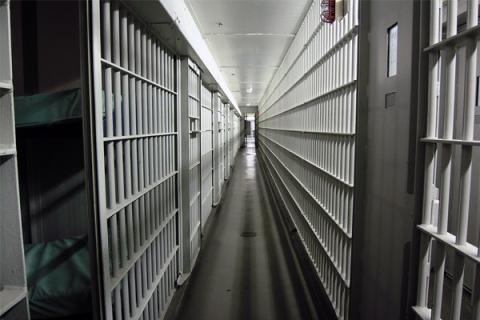 trekandshoot / Shutterstock.com
trekandshoot / Shutterstock.com
When the San Diego Community Corrections Department began the controversial expansion of a local detention facility in early 2012, an observing NGO gave them a failing grade in evidence-based methods. Just a few months later, however, the primary purpose of the same expanded facility was changed and given new holistic re-entry programs for inmates preparing for a rocky transition back into society.
When asked for comment, chief probation officer Mack Jenkins strongly emphasized that the gradual expansion of rehabilitative programming had been a part of the CCP's mission statement since the very beginning.
Commander Will Brown of the SD County Sheriff's department confirmed that statement, as does a publicly available document detailing the process by which the original San Diego realignment implementation plan came to include an explicit plan concentrating on "alternative custody options in custody programming."
"The two primary concerns of the Sheriff were public safety and re-entry," revealed Commander Brown:
"Early in the planning process, Sheriff Gore decided that San Diego County would need to do things differently than the California Department of Corrections and Rehabilitation (CDCR). Understanding that simply building new jail beds would not be a sustainable solution, we began to focus on developing a realignment plan with a heavy emphasis on re-entry."
East Mesa was chosen from other facilities because of its "more open, campus-like design." It currently houses 549 inmates in a 567-bed facility -- all "lower level offenders who work in the food processing plant, laundry, print shop, construction trades, landscaping and commissary."
The services provided at the facility are comprehensive and implemented simultaneously for maximum effect on screened participants. The Reentry Services Division currently provides substance abuse services, educational/vocational programming, counseling services, and cognitive behavioral programming (Thinking for a Change), all of which can be subtly life-changing if employed in the right combination for the individual assessment of each participant.
A previous article on IVN features a brief examination of Thinking for a Change (T4C), which was developed by the National Institute of Corrections for the express purpose of preventing recidivism in recently released offenders. The 25-lesson program begins by re-educating participants in basic social interactions, understanding the thoughts and motivations of others, and becoming aware of one's own self-destructive thought patterns by slowing and rationalizing emotion.
Adults plagued with destructive impulses may lack self-examination that allows them to rationally identify patterns and what they need to break the cycle.
The program's exhaustive list of social skills combines interaction and introspection, which crucially practices safely processing stress or misfortune that could trigger bad habits. Once self-stabilized, participants can name patterns of behavior, make a plan to counter them, and stick with it.
As Brown and Jenkins both pointed out, it is still too early for definitive numbers on recidivism post-implementation of the new programming. October 1 is realignment's two year anniversary and data due date, and according to Mr. Jenkins, SANDAG has been hired to do the county evaluation.
August 2013 saw the completed T4C training of all San Diego County Sheriff's Department Correctional Counselors, as well as "20 community based organizations" provided re-entry counseling. T4C has also expanded from East Mesa into Las Colinas, George Bailey, and Vista Detention Centers, "with a proposed expansion to all facilities by the end of the year."
As exhaustively comprehensive as the new program expansions are, there isn't much information on how inmates respond to the therapeutic interventions. Jenkins puts the official recidivism rate (as defined by new charges) for the first year of realignment at 24 percent.
In less than a month, we will know how the new expansions changed that number. In the meantime, the personal experiences of post-release ex-convicts are yet to be told.
